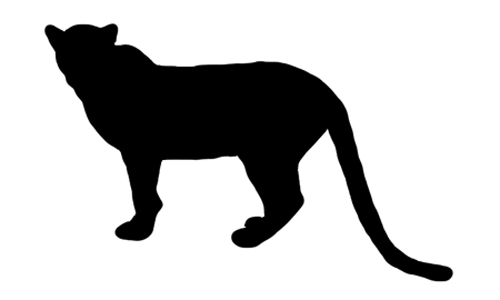Updated on May 9th, 2017 to reflect new taxonomic decisions made by the IUCN Cat Specialist Group’s Cat Classification Task Force.
So how many different species of wild cats are there in the world? That depends on who you ask. The answer ranges from 37 to 42 species. The reason for this is that cat taxonomy is incredibly difficult and genetic analysis is still shedding light on the matter. Just in early 2017, the Sunda Leopard Cat was determined to be its own species from the Leopard Cat — now called the Mainland Leopard Cat. So, to clear things up, I put together the most accepted list of the 40 wild cat species in the world. This list will undoubtedly change in the future, especially as genetic analysis reveals that current species are actually multiple different species, but I’ll be sure to update it when that happens. The list is organized by the eight different feline lineages. Finally, the underlined common names are links to pictures I have of that species.
| Common Name | Latin Name | Lineage | |
| 1. | Lion | Panthera leo | |
| 2. | Leopard | Panthera pardus | |
| 3. | Jaguar | Panthera onca | |
| 4. | Tiger | Panthera tigris | Panthera Lineage |
| 5. | Snow Leopard | Panthera uncia | |
| 6. | Clouded Leopard | Neofelis nebulosa | |
| 7. | Sunda Clouded Leopard | Neofelis diardi | |
| 8. | Asiatic Golden Cat | Catopuma temminckii | |
| 9. | Borneo Bay Cat | Catopuma badia | Bay Cat Lineage |
| 10. | Marbled Cat | Pardofelis marmorata | |
| 11. | Caracal | Caracal caracal | |
| 12. | African Golden Cat | Caracal aurata | Caracal Lineage |
| 13. | Serval | Leptailurus serval | |
| 14. | Geoffroy’s Cat | Leopardus geoffroyi | |
| 15. | Guiña | Leopardus guigna | |
| 16. | Southern Oncilla | Leopardus guttulus | |
| 17. | Northern Oncilla | Leopardus tigrinus | Ocelot Lineage |
| 18. | Andean Cat | Leopardus jacobita | |
| 19. | Colocolo | Leopardus colocolo | |
| 20. | Margay | Leopardus wiedii | |
| 21. | Ocelot | Leopardus pardalis | |
| 22. | Iberian Lynx | Lynx pardinus | |
| 23. | Eurasian Lynx | Lynx lynx | Lynx Lineage |
| 24. | Canada Lynx | Lynx canadensis | |
| 25. | Bobcat | Lynx rufus | |
| 26. | Mountain Lion | Puma concolor | |
| 27. | Jaguarundi | Herpailurus yagouaroundi | Puma Lineage |
| 28. | Cheetah | Acinonyx jubatus | |
| 29. | Mainland Leopard Cat | Prionailurus bengalensis | |
| 30. | Sunda Leopard Cat | Prionailurus javanensis | |
| 31. | Fishing Cat | Prionailurus viverrinus | |
| 32. | Flat-headed Cat | Prionailurus planiceps | Leopard Cat Lineage |
| 33. | Rusty-spotted Cat | Prionailurus rubiginosus | |
| 34. | Pallas Cat | Otocolobus manul | |
| 35. | European Wild Cat | Felis silvestris | |
| 36. | African Wild Cat | Felis lybica | |
| 37. | Chinese Mountain Cat | Felis bieti | |
| 38. | Sand Cat | Felis margarita | Domestic Cat Lineage |
| 39. | Black-footed Cat | Felis nigripes | |
| 40. | Jungle Cat | Felis chaus |
The currently listed subspecies that are sometimes listed as their own species.
| Common Name | Latin Name | Sometimes Classified As | |
| – | Pampas Cat | Leopardus colocolo pajeros | Leopardus pajeros |
| – | Pantanal Cat | Leopardus colocolo braccatus | Leopardus braccatus |
| – | Iriomote Cat | Prionailurus bengalensis iriomotensis | Prionailurus iriomotensis |











